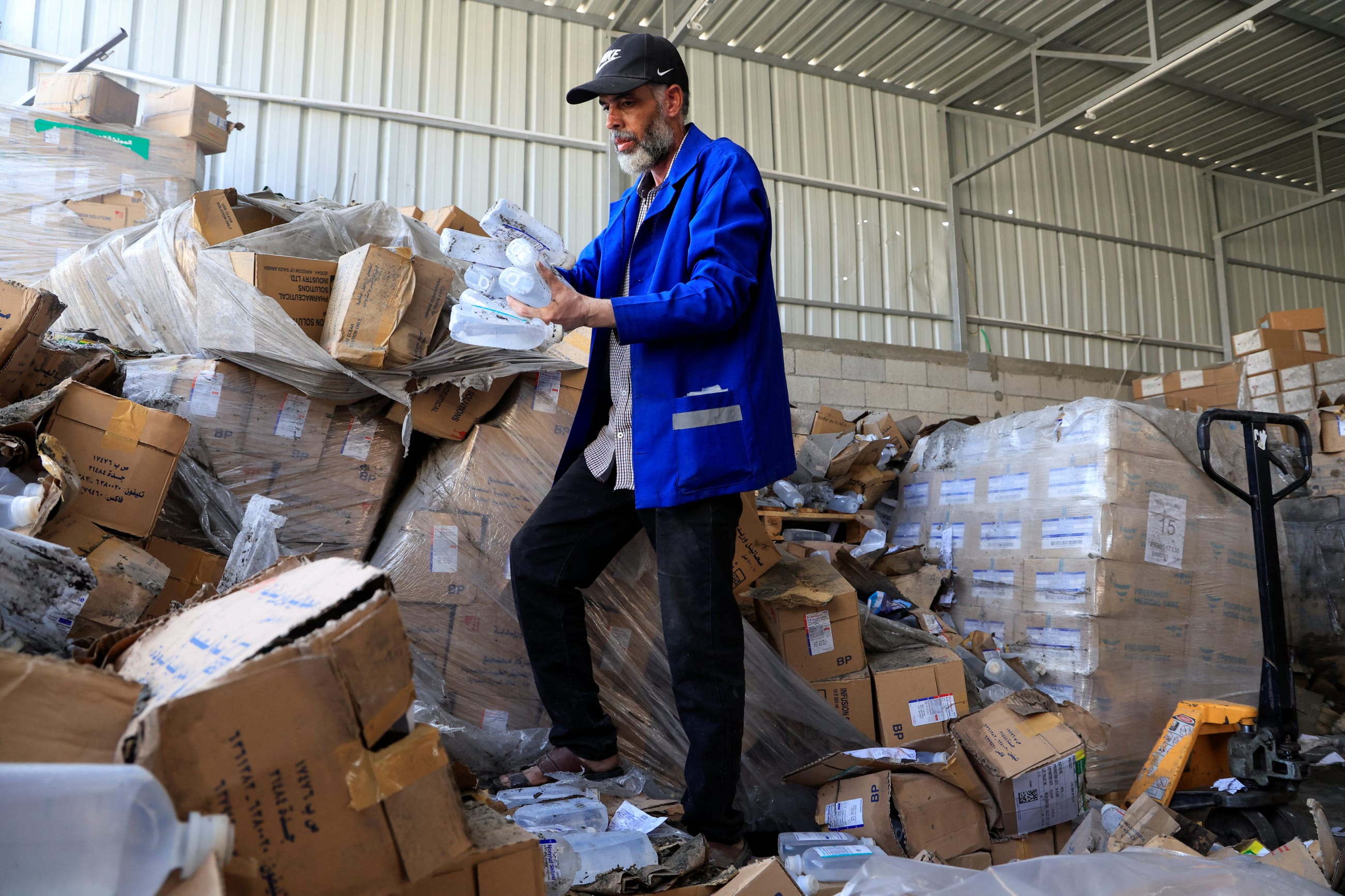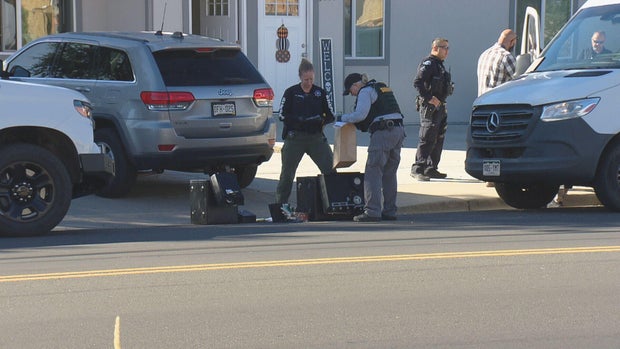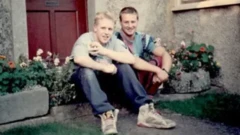Report on the Gaza Conflict: Violations of International Law and Setbacks to Sustainable Development Goals
The conflict in Gaza has resulted in a severe humanitarian crisis, marked by significant violations of international humanitarian law. These actions have led to a catastrophic regression on multiple Sustainable Development Goals (SDGs), particularly those concerning health, hunger, and justice. This report analyzes the impact of the conflict on the SDGs, details the erosion of legal protections for civilians, and outlines the need for international accountability.
Impact on Sustainable Development Goals in Gaza
The conduct of the war has directly undermined the 2030 Agenda for Sustainable Development. The systematic destruction of infrastructure and the denial of humanitarian aid have created dire conditions, reversing progress and inflicting long-term damage on the population’s well-being and prospects for recovery.
SDG 3: Good Health and Well-being
The healthcare system in Gaza has been systematically dismantled, constituting a grave violation of SDG 3 targets for universal health coverage and protection from health emergencies.
- Destruction of Health Facilities: Hospitals have been subjected to repeated and punishing attacks. Notable incidents include the bombing of the Turkish-Palestinian Friendship Hospital, a major cancer center, and direct shelling of Nasser Hospital, which destroyed a surgical suite.
- Attacks on Medical Personnel and Transport: Medical personnel and transport have been targeted, culminating in an attack on March 23-24, 2025, that killed 14 Palestinian medics and rescue personnel. This represents the deadliest attack on Red Cross or Red Crescent workers globally in eight years.
- Denial of Medical Supplies: The blockade of aid led to critical shortages of essential medical supplies. Hospitals ran out of blood, pain medication, anesthetics, and antibiotics, making effective medical care impossible.
- Public Health Collapse: The crisis resulted in tens of thousands of children going unvaccinated, exposing them to preventable diseases.
SDG 2: Zero Hunger
The deliberate restriction of food and water has been used as a method of warfare, leading to widespread starvation and a complete reversal of progress toward SDG 2.
- Imposition of Starvation: In March 2025, all food and medical supplies to Gaza were cut off. This action was explicitly framed as a means to pressure Hamas, directly contravening international law prohibiting the starvation of civilian populations.
- Escalation of Hunger: The blockade caused an immediate and catastrophic escalation of hunger, prompting the International Court of Justice to issue provisional measures to prevent starvation and the International Criminal Court to issue arrest warrants for the crime of starving the population.
- Attacks on Aid Seekers: Between May and July, nearly 1,400 people seeking food were killed by Israeli forces and contractors at aid distribution sites. Investigations revealed that troops were ordered to fire on Palestinians waiting for aid.
SDG 16: Peace, Justice and Strong Institutions
The conflict has been characterized by a disregard for international humanitarian law, weakening the global institutions and legal frameworks that underpin SDG 16.
- Erosion of Legal Norms: Israel’s actions evolved from feigned compliance and novel reinterpretations of law to open contempt for it. This included rationalizing disproportionate harm to civilians and redefining the special protection of hospitals.
- Lack of Accountability: Investigations into attacks, such as the killing of medics, were dismissed as “operational misunderstandings” without addressing legal obligations or ensuring justice. This lack of accountability undermines the rule of law.
- Threat to International Law: The open contempt for the Geneva Conventions threatens the legitimacy and vitality of international humanitarian law, potentially enabling other states to commit similar crimes and eroding global peace and justice mechanisms.
A Call for Accountability and Restoration of Global Norms
The international community’s inaction has allowed atrocities to occur on an unfathomable scale. A global reckoning is essential to restore the integrity of international law and reaffirm the commitment to the Sustainable Development Goals.
The Role of the International Community
Restoring global norms requires decisive action from international bodies and member states to uphold their collective responsibilities.
- Governments and international agencies must condemn not only the violations but also the legal reinterpretations that seek to drain the law of its protective purpose.
- States should pursue legal action under principles of universal jurisdiction to bring perpetrators to justice and affirm the vitality of international law, directly supporting SDG 16.
Recommendations for Upholding SDGs in Conflict
Specific steps must be taken to reinforce the legal protections that are foundational to achieving the SDGs.
- The UN Security Council should unequivocally reject efforts to undermine critical protections for civilians and healthcare in conflict.
- There must be a collective reaffirmation of the proper understanding of legal principles, including proportionality, precautions in attack, the special protection of hospitals, and the unimpeded facilitation of humanitarian aid.
- Accountability mechanisms must be strengthened to ensure that violations of international law do not go unpunished, thereby restoring faith in the institutions designed to protect peace and human dignity.
Analysis of Sustainable Development Goals in the Provided Article
1. Which SDGs are addressed or connected to the issues highlighted in the article?
-
SDG 2: Zero Hunger
- The article directly addresses the issue of hunger and food insecurity in Gaza. It describes the “starvation of the population,” the severe restriction on the “entry of food into Gaza,” and the cutting off of “all food and medical supplies.” This deliberate use of starvation as a tactic of war is a direct assault on the goal of ending hunger.
-
SDG 3: Good Health and Well-being
- This is a central theme of the article. It details the “wholesale destruction of health care in Gaza,” including “attacks on health care,” the killing of health workers, and the destruction of hospitals like the Turkish-Palestinian Friendship Hospital and Nasser Hospital. The text also highlights the consequences, such as children going unvaccinated, and hospitals running out of essential supplies like blood, anesthetics, and antibiotics, which directly undermines the goal of ensuring healthy lives.
-
SDG 6: Clean Water and Sanitation
- The article mentions the deliberate cutting off of essential services, including the decision by Israel to “no longer supply electricity for desalinization of water drinking.” It also notes that during hospital assaults, the IDF “frequently cut off water and electricity essential for life support.” This directly impacts the availability of clean water, a key component of SDG 6.
-
SDG 11: Sustainable Cities and Communities
- The article describes widespread destruction of civilian infrastructure, which is fundamental to sustainable communities. It records “224 strikes on residential buildings and tents for internally displaced people” and includes images showing the “destruction in a residential neighborhood.” These actions make cities and human settlements unsafe, uninhabitable, and unsustainable.
-
SDG 16: Peace, Justice and Strong Institutions
- The article’s core argument revolves around the failure of justice and the violation of international law. It discusses the “massive killing of civilians,” breaches of the Geneva Conventions, and the need for a “moral reckoning.” The text explicitly details attacks on civilians, medics, and aid seekers, highlighting a complete breakdown of peace, the rule of law, and accountability, which are the cornerstones of SDG 16.
2. What specific targets under those SDGs can be identified based on the article’s content?
-
Target 2.1: By 2030, end hunger and ensure access by all people, in particular the poor and people in vulnerable situations, including infants, to safe, nutritious and sufficient food all year round.
- The article describes how the population of Gaza was subjected to starvation, with food supplies being deliberately cut off. The mention of the International Criminal Court’s focus on “the crime of starving the population” and the killing of “almost 1,400 people seeking food” directly relates to the failure to ensure access to sufficient food.
-
Target 3.d: Strengthen the capacity of all countries, in particular developing countries, for early warning, risk reduction and management of national and global health risks.
- The “wholesale destruction of health care,” including blowing up a major cancer center (the Turkish-Palestinian Friendship Hospital) and destroying a surgical suite in Nasser Hospital, represents a catastrophic degradation of Gaza’s capacity to manage any health risks. The article notes that “hospitals ran out of blood, and pain medication, anesthetics, and antibiotics,” and “tens of thousands of children went unvaccinated,” indicating a complete collapse of the health system’s capacity.
-
Target 6.1: By 2030, achieve universal and equitable access to safe and affordable drinking water for all.
- The announcement that Israel would “no longer supply electricity for desalinization of water drinking” is a direct action that undermines access to safe drinking water for the entire population of Gaza, directly contradicting this target.
-
Target 11.5: By 2030, significantly reduce the number of deaths and the number of people affected and substantially decrease the direct economic losses relative to global gross domestic product caused by disasters, including water-related disasters, with a focus on protecting the poor and people in vulnerable situations.
- Armed conflict is a man-made disaster. The article’s documentation of “224 strikes on residential buildings and tents for internally displaced people” and the “massive killing of civilians” shows a direct failure to protect people in vulnerable situations from the deadly impact of this disaster.
-
Target 16.1: Significantly reduce all forms of violence and related death rates everywhere.
- The article is replete with examples that counter this target, including the “massive killing of civilians,” the killing of “14 Palestinian medics and other rescue personnel” in a single incident, the death of 20 people in an attack on Nasser Hospital, and the killing of “almost 1,400 people seeking food.” These are direct measures of violence and related death rates.
3. Are there any indicators mentioned or implied in the article that can be used to measure progress towards the identified targets?
-
For Target 2.1 (End Hunger):
- Number of people killed while seeking aid: The article states that “almost 1,400 people seeking food” were killed between May and July, a stark indicator of extreme food insecurity and the dangers associated with accessing it.
-
For Target 3.d (Health Capacity):
- Number of health facilities attacked or destroyed: The article explicitly mentions the destruction of the “Turkish-Palestinian Friendship Hospital” and direct attacks on “Nasser Hospital.”
- Availability of essential medicines: The text indicates a complete stockout, stating that “pain medication, anesthetics, and antibiotics ran out.”
- Child vaccination coverage: The article notes that “tens of thousands of children went unvaccinated,” a direct measure of the breakdown in routine health services.
-
For Target 16.1 (Reduce Violence):
- Number of conflict-related deaths of civilians: The article provides specific figures, such as the “killing of 14 Palestinian medics,” the death of “20 people, including journalists, patients, health workers, and other civilians” at Nasser Hospital, and the killing of “almost 1,400” people seeking aid.
- Number of attacks on protected persons/personnel: The article details the “deadliest attack on Red Cross or Red Crescent workers anywhere in the world in eight years,” with 14 medics killed, and notes the total number of Palestinian Red Crescent Society staff and volunteers killed reached 30.
- Number of attacks on civilian infrastructure: The article records “224 strikes on residential buildings and tents for internally displaced people” in a three-week period.
4. Table of SDGs, Targets, and Indicators
| SDGs | Targets | Indicators |
|---|---|---|
| SDG 2: Zero Hunger | 2.1: End hunger and ensure access by all people… to safe, nutritious and sufficient food all year round. |
|
| SDG 3: Good Health and Well-being | 3.d: Strengthen the capacity of all countries… for early warning, risk reduction and management of national and global health risks. |
|
| SDG 6: Clean Water and Sanitation | 6.1: Achieve universal and equitable access to safe and affordable drinking water for all. |
|
| SDG 11: Sustainable Cities and Communities | 11.5: Significantly reduce the number of deaths… caused by disasters… with a focus on protecting the poor and people in vulnerable situations. |
|
| SDG 16: Peace, Justice and Strong Institutions | 16.1: Significantly reduce all forms of violence and related death rates everywhere. |
|
Source: thinkglobalhealth.org






